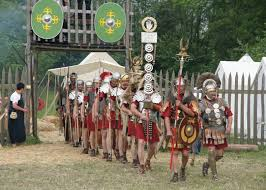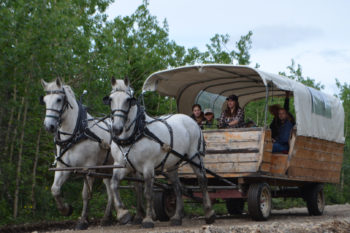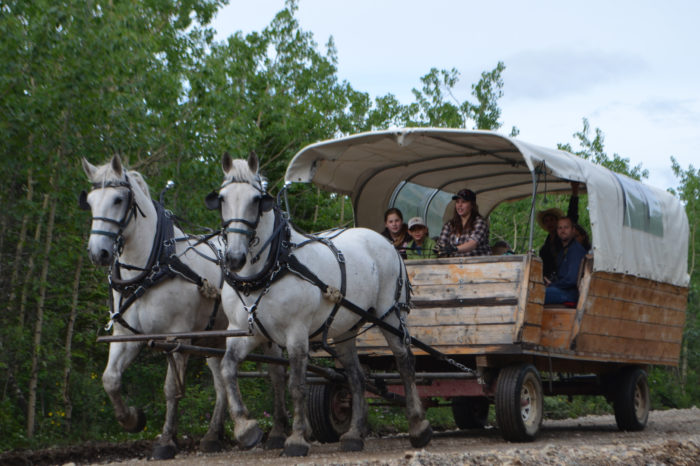Speculative Fiction Writers Guide to War, part 20: Transportation: Beastly Power
This post is the first of a two parter that will assemble some basic information on moving troops and supplies to provide details for your story worlds, looking mostly at fantasy-type settings, but also touching on science fiction. (“Beastly Power” is meant to refer to animal or human power in a way I hope sounds interesting.) This kind of thing is invaluable for delving into a number of specific details if that’s what you’re inclined to do. For example, you need info like this if you know two of your cities are so many miles or leagues (or whatever measurement) apart and want to calculate how long it would take Invading Army X to get to City-in-Danger Y. Or in reverse, if you know that two cities are, say, five days of ordinary cavalry movement apart, you can calculate the distance between cities in objective units (and that distance would be about 5 x 40 miles per day or 200 miles / 320 kilometers based on ordinary “beastly” horse cavalry movement, which you will see below).
Note this article only attributes a few sources. Some things come directly from my memory based on a number of years of marching and riding and more importantly from reading about marching and riding. Others bits of info have been checked with various Internet sites, but citing them all would be tedious. Feel free to confirm these figures on your own if you wish, but this article affirms they’re generally accurate (and asks you to trust that’s true).
Let’s start at the most basic form of beastly transportation there is. Troops moving themselves by foot.
How far do well-trained (human) soldiers march per day? Assuming good marching conditions–that is, on well-maintained roads, for an army with a baggage train of food and provisions so they don’t losing time foraging for themselves–an army at maximum marched about 40 miles / 67 km per day.
Troops in top condition can march about 4 miles per hour (about 6.5 km/hr), but over extended distances, a speed of 3 MPH (4.8 km/hr) is more realistic. So a march of 40 or even 50 miles in a day would mean marching 13 or more hours in a single day, taking only minimal time to eat and rest. This kind of maximum march is called a “forced march” and it’s possible to get troops in very best physical condition (troops that routinely march every single day) to do several forced marches in a row–but the army will be normally be exhausted after than and not be worth much for fighting. (Though making them manage to fight well anyway might be something you want to do for story purposes.) Troops who don’t march every single day but are in otherwise good condition probably will need significant rest after just one forced march. (Yes, that means troops in average or poor shape won’t be able to perform even one march that long.)
Of course, we’re talking human beings when we tap into historical examples. Lord of the Rings revealed Uruk-hai (Isengard orcs) able to jog for days on end with virtually no rest, effectively moving at least about 120 miles (200 km) per day (6 MPH for 20 hours) for a number of days in a row. In fact, they may have gone even as fast as 200 miles per day (320 km), but even for a orc, that would be quite a feat. However fast the orcs moved, it was a pace elves were shown to be able to keep effortlessly, and a particular dwarf could keep with great effort–while Aragorn could do the same pace essentially because he’s a legendary hero (though in fairness, there are extreme athletes in the real world who can in fact run 120 miles per day–but it’s a rare person who can). But in general, demi-humans are portrayed as exceeding humans in “beastly power” to move themselves.
Just bear in mind that running for days on end evokes a capacity that very, very few human beings have–it exceeds the limits of ordinary beastly power. You’re generally talking demi-humans, magical beings, or superhumans if you show someone who can do that. Or perhaps aliens or cyborgs.
So if 40 miles per day is a forced march, what’s a regular march? If troops have to forage for their own food as they go, as many armies did in the Middle Ages, 6 to 16 miles per day is realistic (10 to 26 km). “Foraging” does include hunting and gathering food, but often in practice meant “acquiring” food from local peasants, only actually paying for it when being extra nice.
If troops are well-supplied with food, they can march 3 miles per hour for about 8 hours or approximately 25 miles (40 km) per day, giving them time to break camp in the morning, set up camp in the evening, time to eat, maintain weapons, etc. This is a pace troops accustomed to marching can keep up as long as the army has the supplies it needs.
The distance troops can realistically march per day is lower in places where there’s bad terrain. Bogs, swamps, terrain turned to mud because of heavy rain, and dense undergrowth are the some of the worst terrain types for marching troops. Though crossing mountains and wide rivers also will require extra time, as will thick snow for the few armies able to march in winter. In some cases, historic armies in difficult terrain may have moved only 3 miles or 5 kilometers per day.
To be supplied with food, a medieval or ancient-style army that isn’t foraging will have a baggage train carrying supplies (“train” here doesn’t refer to a locomotive, but to a group of wagons, horses, and/or porters). If the wagons are pulled by oxen (who have great strength to pull wagons) then the speed of the army is limited to the pulling speed of oxen. Which is about 2 miles per hour or 16 miles (26 km) per day (in other words, slow).
Since oxen are so slow, you might wonder how much troops can carry on their own bodies if they decide to break away from their baggage train to make better time. On their own persons, troops can carry at most around 60 percent of their own body weight for an extended period–Romans carried about 80 pounds of gear (36 kg) when the average weight of a soldier was about 140 pounds (64 kg)–and they marched around 25 miles a day in all that gear, day after day. In the US Civil War, soldiers carrying about 35 to 40% of body weight was more standard (around 50 pounds or 23 kg for a 140 pound soldier). Note though that unless the army you’re created has access to bodies of fresh water along the way, they will need a minimum (depending on how hot it is) of about a gallon and a half of drinking water per day (about 6 liters) weighing about 12 pounds or 6 kilograms per day. (So the army usually can only be a few days away from the baggage train.)

Credit: Roman Warfare weebly.com
If the baggage train uses horses to pull wagons or camels to carry loads (I don’t think you can get a camel to pull a wagon by the way–they refuse), then the baggage train can keep pace with human beings marching, even a forced march, without a problem.
Which brings up the question, how far can horse cavalry or camel cavalry move in a day? Much faster than men on foot, right?
Faster, yes, but not as much faster as you might think. The horses or camels or other animals moving by beastly power alone need to rest, drink, and eat for themselves, after all. And a horse cannot gallop endlessly, unless it’s a magical horse, in spite of what some movies seem to show. An ordinary horse in good condition can gallop about a mile or a mile and a half (about 1.6 to 2.5 km) before needing a rest and starts to get seriously exhausted at 2 or 2.5 miles (3.2 to 4 km)–I mean exhausted to the point it can’t go any more and may have health issues and will definitely need extended rest. Some horses can make 3 miles, but for non-magical horses, that’s pretty much it.
And how fast do horses gallop? It depends on the horse, with large, heavy horses generally slower. According to one site, 25 to 30 mph (40 to 48 km/hr) is normal, but the world record for a horse galloping over a short sprint distance was 55 mph or 88 kilometers per hour.
A horse does best at long distances by alternating between trotting and walking. (Cavalry soldiers pushing their horses very hard would alternate between galloping and trotting–nobody ever galloped horses over very long distances.) Doing that, a horse’s ordinary daily rate of travel by beastly power alone is about 40 miles per day (65 km/day). A camel, likewise, makes about 40 miles per day during routine military marches that are equivalent to infantry moving 25 miles per day.
This cavalry movement is equivalent to marching infantry in that it requires adequate roads and access to water and food (though camels can forgo the water and food longer than horses or humans can). Through mountainous terrain a horse might make only 10 miles (16 km) per day and will do as poorly through a bog or marsh as a human being–or even worse than a human, since there are places people can cross that horses can’t, though such places are relatively few.
Just as humans can be pushed to the limits of beastly power when performing forced marches, horses can be forced to push to their limits in emergency situations. The ordinary maximum distance a horse can go under such circumstances is around 100 miles (160 km) per day. During Indian Wars in the United States, a particular cavalryman fled the site of a battle (seeking reinforcements, he said) all the way to now-Historic Fort Laramie, Wyoming, travelling 236 miles (380 km) over four days over terrain without roads during a winter with relatively heavy snow. His horse dropped dead when he arrived at the fort (I’ve seen the monument to the horse who died there). But note that was “only” 59 miles (95 km) per day. And pushing that hard killed the horse.
So let’s look at beastly power on an animal’s back:
Looking at what a horse can realistically survive, how much weight can a horse carry? We noted that well-conditioned humans can at times carry up to 60% of their body weight for extended periods–so how much can horses carry? A lower percentage, actually. Optimum for horses is 20% according to one online article, though up to 30% is possible (I can tell you from experience smaller horses in general can actually handle a higher percentage than larger horses, though not a higher total weight). And how much do horses weigh? Between 840 pounds (380 kg) for an small-sized riding horse and 3,360 pounds (1,524 kg) for the world-record largest draft horse (from Wikipedia). Or in other words a horse’s minimum weight load under which it can move normally is about 150 pounds/68 kg for the smallest horse a person would probably ride (rounding down) up to the maximum of about 700 pounds/320 kg (rounding up a bit) for a heavy horse breed meant to carry a knight in armor. (Quick tangent: draft horses in Europe were re-purposed to pull wagons after the era of knights in armor ended–they were first bred to carry armored warriors.)
Donkeys by the way, get closer to carrying 30% of their body weight or a bit more…and a donkey weighs on average about 350 pounds or 160 kg. Which means they can be laden with about 110 pounds or 50 kg. A donkey can drag about twice its body weight across relatively smooth, level ground, for a short distance (horses can pull about 1.5 times their body weight). Donkeys are more sure footed that horses but mules used to be preferred over donkeys as pack animals because they carried loads a bit better than horses, could keep up with horses, had good endurance, and could tolerate coarser food than horses can. Mules can weigh up to 1,000 pounds (454 kg) but usually were not loaded above 20% of their body weight (mules pack 200 lbs/90 kg or less).
Among animals widely used as pack animals, it’s no surprise that elephants have the most beastly power–er, total carrying capacity. An elephant can carry about 25% of its body weight according to one estimate. Since Asian elephants weigh between 5,400 and 11,000 pounds (2700 and 5000 kg), that means an elephant can carry 1,350 and 2,750 pounds (615 to 1,250 kg) on its back (tangent: it can carry about 1,200 pounds or 500 kg in its mouth and trunk, in case you wanted to know).
But the grand champion of pack animals in proportion to body weight are camels, which on average weigh (for single hump dromedaries) between 880 and 1,325 pounds (400 to 600 kg), according to a live science article, and can carry loads up to 375 to 600 pounds (170 to 270 kg), which is between 40 and 45 percent of their body weight.
Note that this issue of how much weight a being can carry proved to be a serious limiter of warfare and exploration for Mesoamerican Empires like the Mayans and Aztecs. Because these powers did not use pack animals at all, nor did they have wheels (the wheel ironically had been invented by the Mayans, but was used as a child’s toy rather than for wagons or carts), their limit of beastly power was how much food could a porter carry on his back. Since the corn (or maize) grown in Mesoamerica doesn’t dry out as well as wheat, barley, or rice of the Old World, that also meant the standard food crop carried by troops also weighed more. Since the porters ate from the carried food as well, this prevented the Mayans or Aztecs from, say, conquering all of North America or pushing their empires into South America. The issue of transportation proved to be too difficult for them, limiting the region they were effectively able to control. If they’d invented the pull cart or wheelbarrow, the history of the Americas might have turned out very differently.
Speaking of the limitations of civilizations without wheels, what advantages does the use of a wagon bring?
The advantage a wagon or cart brings is based on the proportion of the radius of the axle to the radius of the wheel. The bigger the wheel is versus the axle, the more advantage the wheel brings (but the wheel also becomes more likely to break the bigger it gets relative to the axle). The attached site explains the wheel/axle ratio advantage in precise mathematical terms.
But for the wagon wheel size that became standard on most wagons and carts, on level ground, the draft weight of a wagon, that is, the amount of force required to pull a “standard” wagon, assuming wheels and axles and road are in good condition, is about 1/10th the weight of the wagon plus its cargo. Note the weight of cargo is usually about 50% of the total wagon weight, even though wagon designs vary a great deal. Draft animals (almost always horses or mules historically but occasionally donkeys or reindeer) generally can pull 1/10th of their body weight for eight hours a day. So to calculate how much cargo a wagon pulled by beastly power can move over long distances, use 1/2 of the weight of the animal pulling the cart (or 50%). So a 1,000 pound (455 kg) mule can pull 500 pounds (227 kg) of cargo–which is about 2.5 times what it can pack.

Credit: Black Diamond Resort
Note the work of pulling a wagon uphill is considerably harder. A weight a team of two horses can pull on level ground will easily require four beasts going uphill. (Note at one point in history hooking eight or more draft animals to a single wagon was not unheard of.) For dystopian worlds in which people are cannibalizing automobile parts to build their wagons, tires filled with air do better than old hard wagon wheels not because they give a better mechanical advantage, but because they are less likely to slip on difficult slopes and provide some cushioning to make the ride less rough than it otherwise would be.
Let’s talk about fantasy beastly power:
In a fantasy work, the number of possible riding mounts are enormous. But I have a recommended model for you to use when considering how far they can move. Use a horse as your model. All you need to decide for yourself is how much your creature weighs and its maximum speed (and I’ll show you what to do with that).
So if you pick a giant flying lizard (we won’t call it a dragon for a specific reason to be revealed in a minute) and say it can fly at fly at the same speed as a site of animal speeds lists the speed of a California Condor (because we can imagine this beast mainly soars, like a condor) or 56 mph (90 kph). Then we’ll look at the proportion of that speed, comparing it to a horse’s top speed relative to how fast a horse normally moves per day in a cavalry unit.
So an ordinary horse can do about 30 mph at top speed, but can move 40 miles in a day on a repeated basis on average. Assuming the same proportions (40/30 = 1.333), you’d just multiply your creature’s top speed by 1.3333 (or 4/3 if you like fractions) to estimate how much it could travel per day without too much stress. To make this easy on ourselves, we will round the speed or our giant flying lizard to 60 mph so we’d estimate (60 x 1.333 = about 80) it can move 80 miles per day on a routine basis. Note of course that cold-blooded creatures can’t sustain effort as long as mammals can if the climate is too cold and are less energetic in general. But your lizard is not necessarily cold-blooded and that calculation gives you and idea, a yardstick to work from if you really want one.
Likewise if a horse can do about 2.5 times in a forced movement what it would ordinarily do (but at great cost) you can take your 80 miles per day for your flying lizard and multiply it by 2.5 to say if in a “forced march” situation, your beastly flying lizard could do about 200 miles per day (320 km/day).
How much weight could your giant flying lizard carry? Here I recommend departing from the horse model a bit. Or better said, the horse model should be restricted to land animals. Flying beasts should limit their carrying capacity to 10% or less of the creature’s total body weight–and if you wish to be realistic at all about a creature’s ability to fly, the lighter it is in proportion to the surface of its wings the better it will fly. In fantasy we can get away with ignoring the rule about body weight in proportion to wing span–and in science fiction, we can imagine denser atmospheres and lighter gravity to allow lizards fly, as David Adam Collings did with his story Lynessa’s Curse in the Medieval Mars anthology I published in 2015. 
How much your flying lizard weighs would be best based on the weight of a real creature you research, whether an extinct pterodactyl or a modern living bird (plus sized) or even a lizard like a Komodo Dragon. But if we imagine it to weigh a ton (2000 pounds/900 kg), it could carry for an extended period roughly 200 pounds or 90 kilograms. An ordinary person and a small saddle.
Sea creatures, by the way, should be able to carry more than the 20%-40% load that land-based beasts of burden can carry. Helped by water buoyancy, they should be able to port up to 100% of their own weight over extended periods. But the other formulas that compare maximum sprinting speed to cruising speed for a “daily march” to a “forced march” will be more or less the same.
There are limits to what beastly power can do, even though there are real variations among known animals and also would no doubt be variations among fantasy animals. For example, a centaur almost surely could carry more weight than a horse because a centaur could go through the mental training that soldiers go through to push themselves beyond what are ordinary animal limits (which is why the Romans could carry 60% of their body weight routinely.)
Magical creatures:
Note that the example I used above of a giant flying lizard I did not call a “dragon.” I didn’t because dragons are really magical creatures. Once you open the door to magical creatures, the guidelines this post describes don’t really apply anymore. But still I recommend you have some guidelines, some landmarks for yourself of what can and cannot be accomplished.
All real creatures have design limitations put into them by their Maker and even fantasy creatures should properly have limitations put into them by the creature who makes them, who in turn was made by the Maker of all (that’s you!).
As Job 12:7-9 says: “But now ask the beasts, and they will teach you; And the birds of the air, and they will tell you; Or speak to the earth, and it will teach you; And the fish of the sea will explain to you. Who among all these does not know, That the hand of the Lord has done this?” All creatures, real and imaginary, ultimately submit to the Creator, if not now, at the end of time. Whether people realize that or not.
If you’d like to see more on this topic or felt I left something important out of the discussion, please mention it below. Thank you.










































I’m remembering that scene in Spirit now, where the army hitches a ton of mustangs to a train engine and has them pull it. Not that that turned out well :p
A travois could be another way to carry more, if wheels weren’t available. And then in snow there’s sleds.